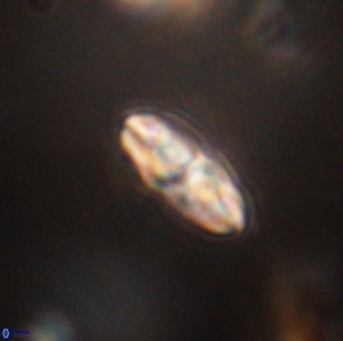Isespetrinesaspides foteinokentro
Set number: 1783
-
1
-
2
-
3
-
4
-
5
-
6
-
7
-
8
-
9
-
10
-
11
-
12
-
13
-
14
-
15
-
16
10µm
Isespetrinesaspides foteinokentro Varol, 2025a
Circular species of Isespetrinesaspides consist of distinctly striated, equal-sized distal and proximal shields that are non-concave-convex and comprised of 28-32 segments and a smooth tube cycle that closes the central area. From a side view, these placoliths resemble a UFO.
From the Greek foteinokentro, meaning "bright centre, " refers to its bright tube cycle.
Maximum diameter = 6.59 μm in the plan view and 7.16 μm at side view; Diameter of the tube cycle = 4.49 μm; width of shields = 1.05 μm and thickness = 2.72 μm.
Optical Properties: The optical properties are similar to those in Isespetrinesaspides, including inclined extinction lines and length-fast (-) elongation. Isespetrinesaspides foteinokentro exhibits laevogyre extinction lines, distinguishing it from the dextrogyre extinction lines typically seen in Noelaerhabdaceae.
Varol, O. 2025a. A practical guide to optical studies of calcareous nannofossils. Grzybowski Foundation Special Publication. 29: 1-222
